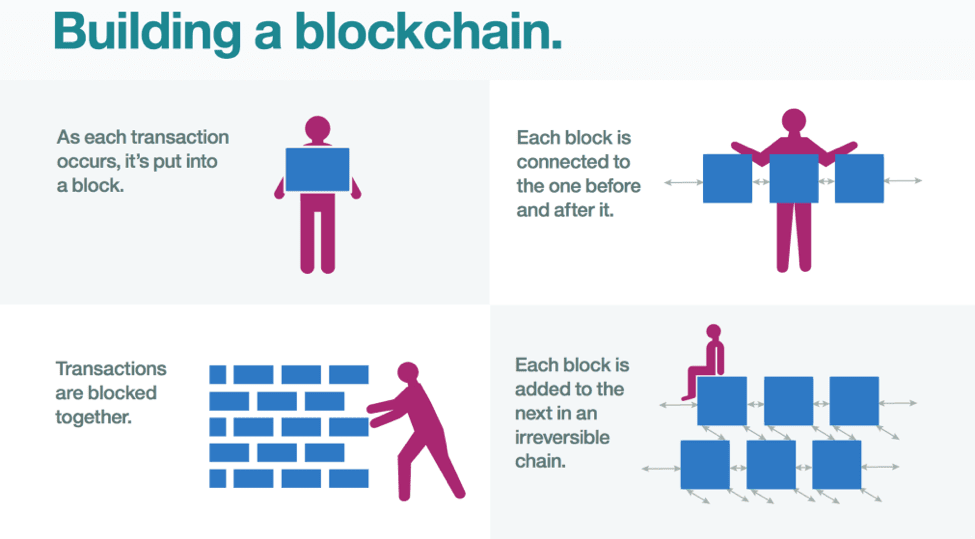深度|btcc:手把手教你搭建区块链(上)
摘要:Coinsuper带你解析如何自己动手搭建区块链“学习区块链的最快方法就是自己亲手搭建一个”如果您已经掌握了一些基础的python知识,那么跟着本文搭建区块链对您来说将不是一件难事儿。在开始之前,有一
Coinsuper带你解析如何自己动手搭建区块链
“学习区块链的最快方法就是自己亲手搭建一个”
如果您已经掌握了一些基础的python知识,那么跟着本文搭建区块链对您来说将不是一件难事儿。

在开始之前,有一些概念需要您先明确:
1. 区块链是一个不变的顺序记录链,称为块。它们可以包含事务,文件或任何您想要记录的数据。您只需记住,它们使用哈希值链接在一起。
2. 哈希函数就是一个简单的函数,它接受输入值,并根据该输入创建确定输入值的输出值。对于任何x输入值,只要运行哈希函数,您将始终收到相同的y输出值。这样,每个输入都有一个确定的输出。哈希函数通常是不可逆的(单向),这意味着仅知道输出就无法弄清楚输入-除非尝试所有可能的输入(也称为暴力破解)。

这是哈希函数md5,可从任何输入数据创建一个32个字符的十六进制输出
掌握了区块,哈希等基本概念之后,您还需要为搭建区块链做一些环境准备工作:请您确保您的电脑已安装 Python 3.6以上(以及pip)、Flask和Requests库。
pip install Flask==0.12.2 requests==2.18.4
Step 1 :搭建区块链
打开你最喜欢的文本编辑器或IDE,推荐使用PyCharm;创建一个新文件,名为blockchain.py
创建一个Blockchain类,创建两个初始的空列表作为构造函数,一个用于存储我们的区块链,另一个用于存储交易。
class Blockchain(object):
def __init__(self):
self.chain = []
self.current_transactions = []
def new_block(self):
# Creates a new Block and adds it to the chain
pass
def new_transaction(self):
# Adds a new transaction to the list of transactions
pass
@staticmethod
def hash(block):
# Hashes a Block
pass
@property
def last_block(self):
# Returns the last Block in the chain
pass
这个区块链类负责管理链。,它存储事务,并具有一些用于将新块添加到链中的辅助方法。
”Block到底长什么样?“
每个Block都有一个索引index,一个时间戳timestamp(以Unix时间表示),一个事务列表,一个proof证明(稍后会有更多介绍)以及前一个块的哈希值。如下面代码所示:
block = {
'index': 1,
'timestamp': 1506057125.900785,
'transactions': [
{
'sender': "8527147fe1f5426f9dd545de4b27ee00",
'recipient': "a77f5cdfa2934df3954a5c7c7da5df1f",
'amount': 5,
}
],
'proof': 324984774000,
'previous_hash': "2cf24dba5fb0a30e26e83b2ac5b9e29e1b161e5c1fa7425e73043362938b9824"
}
此时链的概念应该很明显了:每个新块本身都包含前一个块的哈希。这很关键,因为这使区块链具有不变性,即:如果攻击者破坏了链中较早的区块,则所有后续区块都将包含不正确的哈希。
”将交易添加到区块“
创建一个new_transaction()方法,将交易添加到区块:
class Blockchain(object):
...
def new_transaction(self, sender, recipient, amount):
"""
Creates a new transaction to go into the next mined Block
:param sender: <str> Address of the Sender
:param recipient: <str> Address of the Recipient
:param amount: <int> Amount
:return: <int> The index of the Block that will hold this transaction
"""
self.current_transactions.append({
'sender': sender,
'recipient': recipient,
'amount': amount,
})
return self.last_block['index'] + 1
在new_transaction()将事务添加到列表之后,它将返回要添加该事务的块的索引:即下一个要挖掘的块。这对于提交事务的用户很有用。
”创建一个新区块“
实例化我们的区块链时,我们需要使用创世区块(就是前面没有任何区块)。
我们还需要在创世区块中添加“证明”,这是挖矿(或工作量证明Proof of Work)的结果。 关于Pow可以参考我之前写过的文章:金融小课堂 | 加密货币一级市场概述(上)。
除了在构造函数中创建创世区块之外,我们还需要实例化new_block(),new_transaction()和hash()这三个方法:
import hashlib
import json
from time import time
class Blockchain(object):
def __init__(self):
self.current_transactions = []
self.chain = []
# Create the genesis block
self.new_block(previous_hash=1, proof=100)
def new_block(self, proof, previous_hash=None):
"""
Create a new Block in the Blockchain
:param proof: <int> The proof given by the Proof of Work algorithm
:param previous_hash: (Optional) <str> Hash of previous Block
:return: <dict> New Block
"""
block = {
'index': len(self.chain) + 1,
'timestamp': time(),
'transactions': self.current_transactions,
'proof': proof,
'previous_hash': previous_hash or self.hash(self.chain[-1]),
}
# Reset the current list of transactions
self.current_transactions = []
self.chain.append(block)
return block
def new_transaction(self, sender, recipient, amount):
"""
Creates a new transaction to go into the next mined Block
:param sender: <str> Address of the Sender
:param recipient: <str> Address of the Recipient
:param amount: <int> Amount
:return: <int> The index of the Block that will hold this transaction
"""
self.current_transactions.append({
'sender': sender,
'recipient': recipient,
'amount': amount,
})
return self.last_block['index'] + 1
@property
def last_block(self):
return self.chain[-1]
@staticmethod
def hash(block):
"""
Creates a SHA-256 hash of a Block
:param block: <dict> Block
:return: <str>
"""
# We must make sure that the Dictionary is Ordered, or we'll have inconsistent hashes
block_string = json.dumps(block, sort_keys=True).encode()
return hashlib.sha256(block_string).hexdigest()
这样一个简单的区块链就大功告成了。
如果您会好奇更深层的问题,比如如何创建,伪造或开采新的区块...?
- 免责声明
- 世链财经作为开放的信息发布平台,所有资讯仅代表作者个人观点,与世链财经无关。如文章、图片、音频或视频出现侵权、违规及其他不当言论,请提供相关材料,发送到:2785592653@qq.com。
- 风险提示:本站所提供的资讯不代表任何投资暗示。投资有风险,入市须谨慎。
- 世链粉丝群:提供最新热点新闻,空投糖果、红包等福利,微信:juu3644。





 币圈观察
币圈观察





